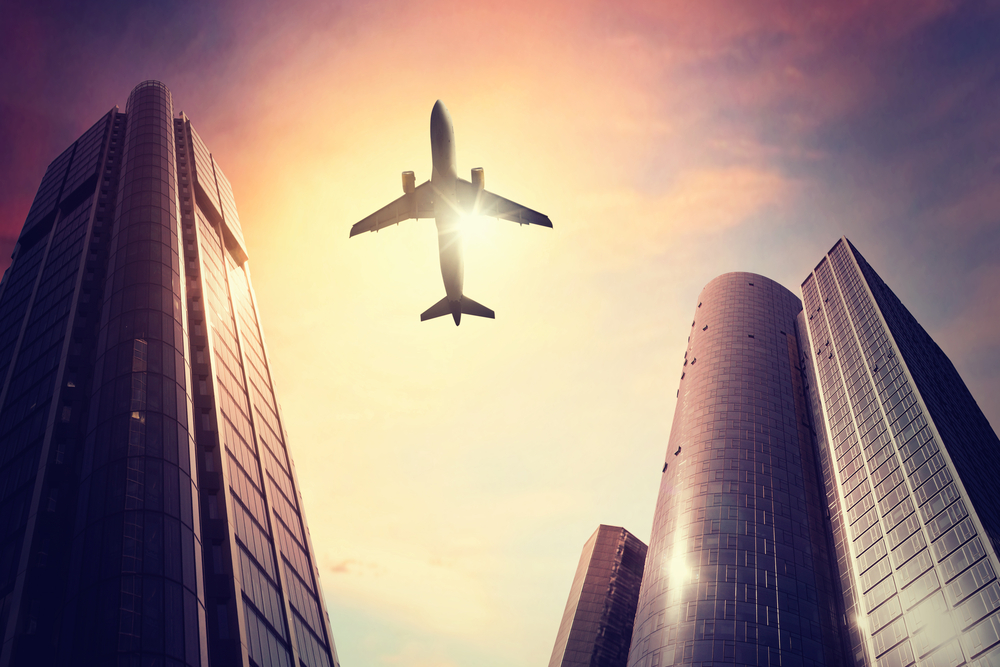Show of hands for those who typically need a vacation after their vacation to catch up on sleep, movement, and life in general? That has always been the case for me. A few years ago, I set a rule that I wouldn’t plan anything two days before or after a vacation so I could take intentional time to get ready, feel rested, and not overwhelm myself with plans. For as long as I can remember, the recurring theme in my life has always been to slow down. I’m someone who likes her hands in many projects and loves a filled social calendar. So—knowing how to stay healthy while flying and traveling everywhere? Hasn’t always been my strong suit.
Exactly What I Do to Stay Healthy While Flying
This year been filled with the most travel I’ve ever had both professionally and personally. To say I’ve been stretched and busier than ever would be a huge understatement. So, just before I set out on my 10-day vacation to Croatia to celebrate a milestone birthday for my sister, I wrote a list of how I wanted to feel when I got back to Austin. Refreshed, inspired, motivated, hydrated, and rested were all top of mind. From there, it was easy to figure out how I was going to stay the course and feel like I didn’t have to play catch up when I returned home.
To share what worked and help us all stay healthy while flying this season, here’s what I did to stay on track and feel my best.
Drink a Ton of Water
It’s one of the simplest things to do. But for me, it’s also one of the easiest things to overlook. I rarely drink enough water on the road as I’m in between hotels and meetings. Plus, lugging around a water bottle feels annoying or gets expensive.
This trip, I made a concerted effort to pack my favorite water bottle and fill it up at the airport, in the hotel bar, and at restaurants so I always had something nearby. It’s small enough that it fit in my bag without being too bulky or heavy and I never once felt parched or dehydrated, which always tends to slow me down.
Block My Calendar in Advance
I realize not everyone will have the ability to do this for a variety of reasons, but I made a concerted effort to not book plans for an entire week after I returned from vacation. That included striking morning coffee meetings and any dinners or events, no matter how strong the FOMO, for the entire week through the weekend.
I wanted a chance to unpack, do laundry, go for long walks, and take time to ease into the work week ahead. Giving everyone a heads up well in advance also helped them plan a bit better around my schedule and any deadlines were easily hit due to some additional and intentional planning.
Don’t Use the Gym
Did that one make you tilt your head and pause in curiosity? I know a LOT of friends who make an effort to get up early and hit the gym while they’re on the road, but I made the decision not to for a few reasons. First, I was just getting over a terrible respiratory infection and flu and thought if I tried to push it too hard, I might end up back to square one of being sick. Second, I wanted my movement to be dual-purpose and soaked up all the walks and hikes we took every single day around the cities we visited. This was my vacation and I wanted some slow mornings of exploring—it was perfect for me and still hit well over 10,000 steps a day. (As always, you do you!)
Pack All the Snacks
Depending on how you vacation, a lot of trips typically mean eating out every meal. At least, that was the case for us as we hotel hopped vs. renting a home for an extended period of time. I wanted to try a lot of the local cuisine, but didn’t want the heavy feeling of eating out for every single meal. (Feeling it both physically and in my bank account.)
I found it helpful to pack snacks that were easy to pop into my bag and felt nutritious for me: nuts, jerky, dried oatmeal, almond crackers, and protein powder. It certainly helped balance the amount of eating out we did. I’ve taken plenty of trips where I didn’t plan ahead and found myself reaching for something less nutritious every day and feeling sluggish when I returned.
Prioritize Rest
This one was the hardest for me, but well worth it. As my therapist recently advised, I need to learn to snack on fun vs. binge on fun. What she means is, I work so hard, typically go head down, that the moment I give myself a break to have fun, I never want it to end. Throw me in a new country with my sister to celebrate something big, and it almost felt impossible to suggest that we should go home and rest. But as I get older, I’m finding if I don’t get a full 7-9 hours of sleep, I’m not just wiped the next day, but it usually lingers longer. We got some of the best sleep and I was so happy to come home and not feel like I needed an extra week of catching up on it.
These might seem like no-brainer suggestions as they’re all things we’ve heard before to implement in our daily lives, but it was prioritizing them that really took the work for me. I hope they help you stay healthy while flying, and ensure your holidays and travel go off without a hitch.



